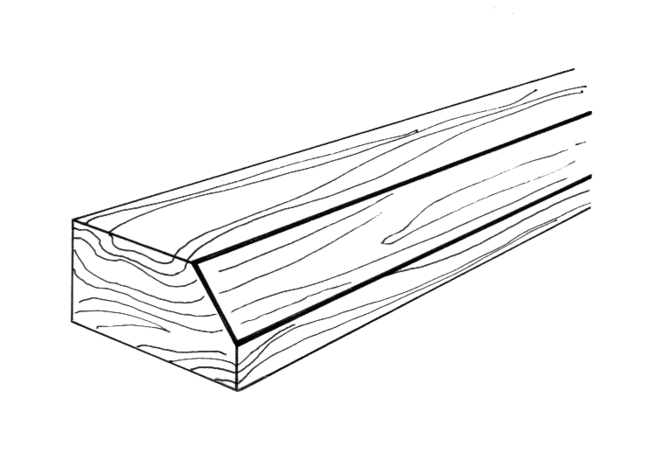
-
Bevel
A bevelled edge (UK) or beveled edge (US) refers to an edge of a structure that is not perpendicular to the faces of the piece. The words bevel and chamfer overlap in usage; in general usage they are often interchanged, while in technical usage they may sometimes be differentiated as shown in the image at right. A bevel is typically used to soften the edge of a piece for the sake of safety, wear resistance, or aesthetics; or to facilitate mating with another piece.
-
Bevel (noun)
An edge that is canted, one that is not a 90-degree angle; a chamfer.
“to give a bevel to the edge of a table or a stone slab”
-
Bevel (noun)
An instrument consisting of two rules or arms, jointed together at one end, and opening to any angle, for adjusting the surfaces of work to the same or a given inclination; a bevel square.
-
Bevel (verb)
To give a canted edge to a surface; to chamfer.
-
Bevel (adjective)
Having the slant of a bevel; slanting.
“a bevel angle”
-
Bevel (adjective)
Morally distorted; not upright.
-
Bezel (noun)
The sloping edge or face on a cutting tool.
-
Bezel (noun)
The oblique side or face of a cut gem; especially the upper faceted portion of a brilliant (diamond), which projects from its setting.
-
Bezel (noun)
The rim and flange which encompasses and fastens a jewel or other object, such as the crystal of a watch, in the cavity in which it is set; the collet.
-
Bezel (noun)
The panel that covers the front of a computer case, or the panel covering each drive bay that can be removed to install a removable drive that requires external access, such as a CD/DVD-ROM drive, which usually has its own preinstalled bezel.
